The following two sketches show the terms and elements used with bends and hitches:

Terms used in describing bends and hitches.
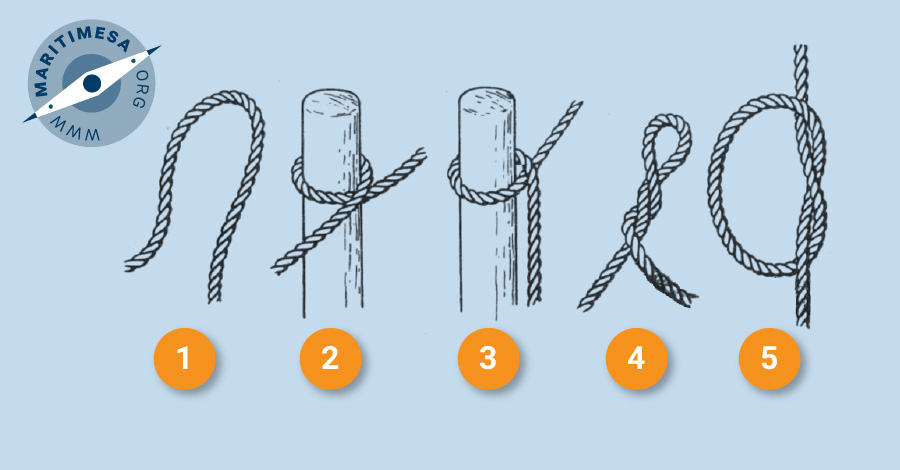
Elements of bends and hitches.
Reef knot. A reef knot consists of two overhand knots made consecutively. It is used as a
common tie for bending together two ropes of equal size. It is not liable to become undone when there is no strain on the knot but it is not reliable if the ropes are of unequal size or very slippery , unless the ends are seized back to their standing parts.

Reef knot.
Figure of eight knot. This knot is used to prevent a rope unreeving through an eye or block.
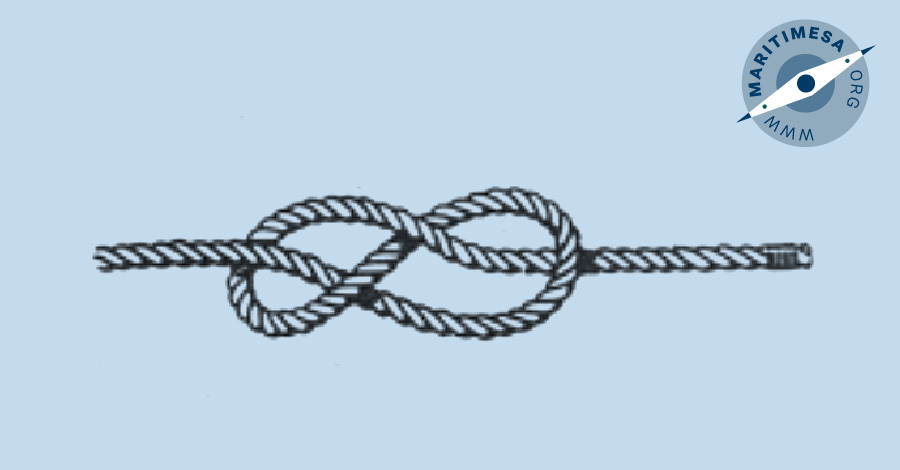
Figure of eight knot.
Timber hitch. This knot is used to secure a rope’s end to a spar or bale.

Timber hitch.
Clove hitch (and clove hitch on the bight). A clove hitch is used to secure a rope to a spar, rail or similar fitting as well as for many other purposes. It will slip along the spar or rail if subjected to a sideways pull.
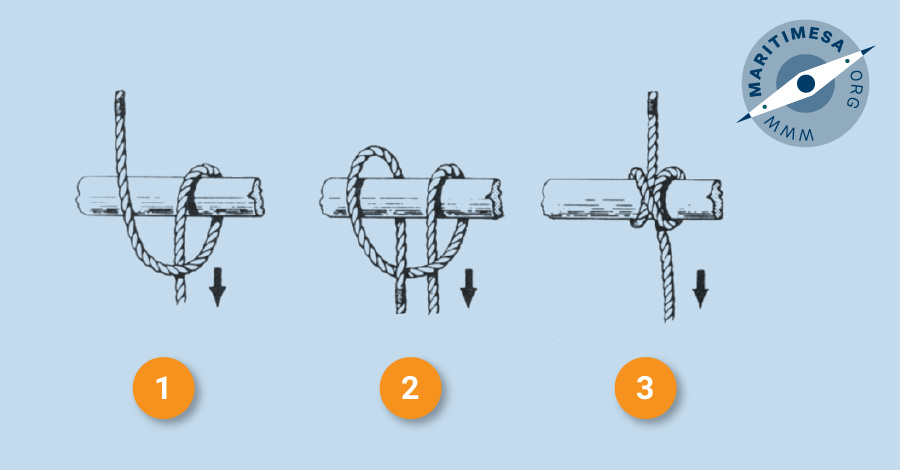
Clove hitch.

Clove hitch on the bight.
Rolling hitch. This hitch is used for securing a rope to a spar when the pull is expected to be from one side or the other, and to another rope under strain.

Rolling hitch.
Round turn and two half hitches. This combination is used to secure a heavy load to a spar, ring or shackle such as the buoy shackle of a mooring buoy. It will never jam and can be cast off quickly. The end should be stopped to the standing part.

Round turn and two half hitches.
Sheet bend. This is used to secure a rope end to a small eye, eg the lazy painter of a boat at the lower boom to the Jacob’s ladder, or the hammock clue when the hammock is slung. It is also used to bend a small rope to a larger one. Originally used to secure a sheet to a clue of a sail. It will not slip and is easily let go.

Sheet bend.
Double sheet bend. A more secure method of accomplishing the same purpose as a single sheet bend. Used to secure a boat’s painter to the eye of the lizard when at the lower quarter or sternboom.
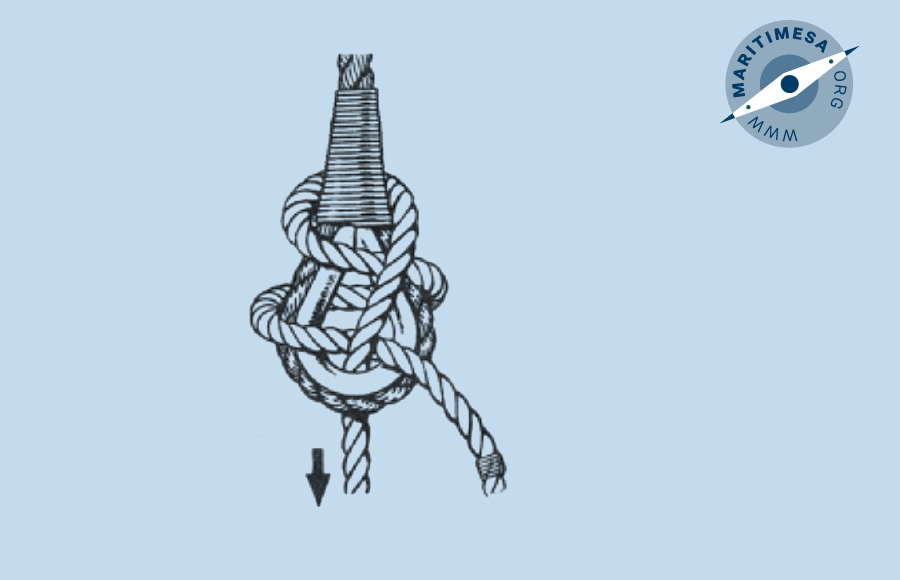
Double sheet bend.
Bowline. This is the most useful knot for making temporary eyes in ropes of all sizes. It is used for bending a heaving line to a hawser, as a lifeline around a man’s waist and for a great variety of similar purposes.

Bowline.
Bowline-on-the-bight. As its name implies, this bowline is made on the bight, the first two operations in its formation being the same as the simple bowline. It is used for lowering a man from aloft or over the ship’s side, the short bight being placed under his arms and the long one under his buttocks.

Bowline on the bight.
Carrick bend. This is used for joining two hawsers together when the join will have to pass round the capstan. The ends should be stopped to their standing parts.

Carrick bend (top) and Double carrick bend (below).
Sheep shank. This is used to shorten a rope (never wire). If the strain is going to be put onto the rope, then the eyes at the ends must be seized or have a toggle put through them. Even then only a steady strain must be applied.
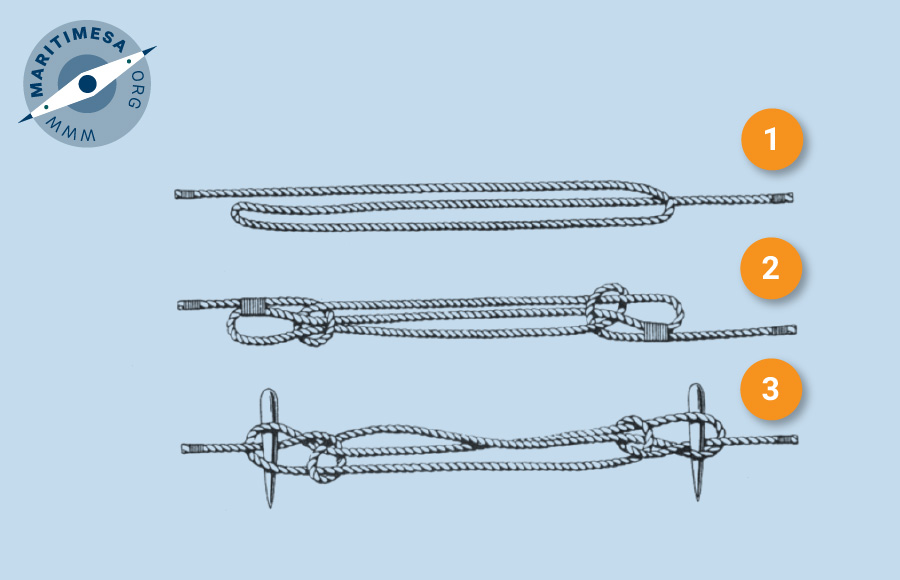
Sheep shank.
Constrictor knot. This is a variation of the clove hitch and is used when a firm grip is required such as holding a thimble in place prior to splicing a hawser’s eye. It is not easily undone when pulled tight. It is nearly permanent and can be pulled from both ends. It is the most secure of all binding knots.
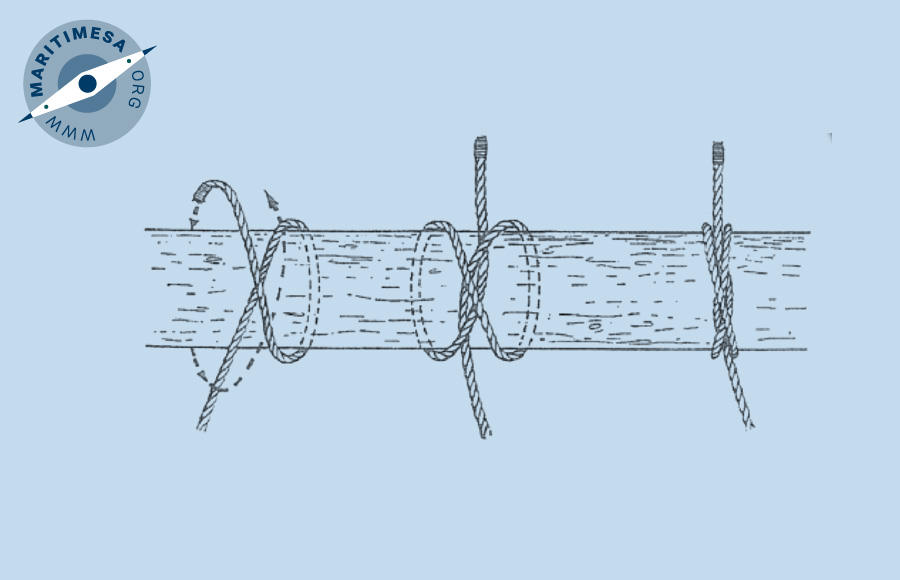
Constrictor knot.
Double thumb knot. This is a secure knot for joining thin line and rope. It is very good for fishing line.
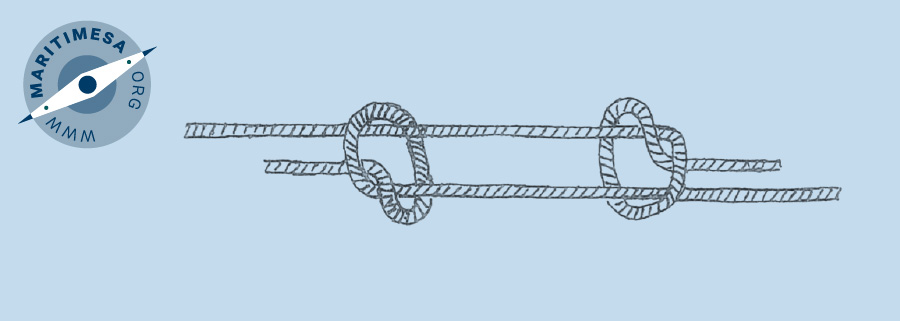
Double thumb knot.


